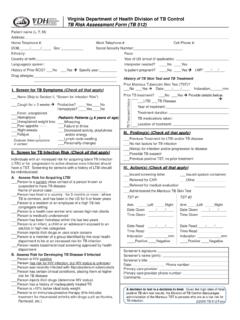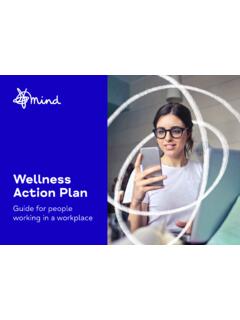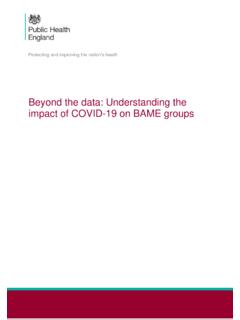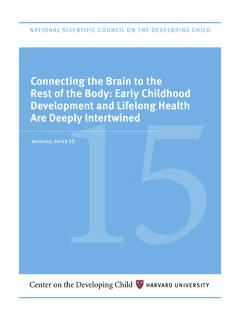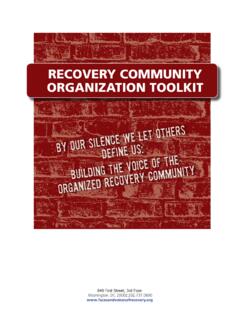Transcription of Interim Guidance for COVID-19 Prevention in Virginia K-12 ...
1 Interim Guidance for COVID-19 Prevention in Virginia PreK-12 Schools EXECUTIVE SUMMARY There is no greater priority than the health and welfare of Virginia s children, and parents have the fundamental right to make decisions concerning the care of their children. These three core principles found in Executive Order 2 reaffirm: 1. Parents are in charge of their children s health, wellbeing and education, 2. Schools must be open five days a week for in-person learning, and 3. The Commonwealth and school divisions must provide a safe and healthy school environment.
2 With freedom comes responsibility. This Guidance clarifies the roles of parents, educators and the schools. The Virginia Department of Health and the Virginia Department of Education will continue to provide quality, actionable and up-to-date information on the pandemic so that parents can continue to make educated health decisions that are best for their child and family. The virus that causes COVID-19 continues to evolve and the tools to fight the virus have expanded. As new variants emerge, the epidemiology may change; therefore, Prevention strategies may need to be adjusted.
3 This public health Guidance has been updated to align with the current risk. A key lesson learned from early in the pandemic is that many students and families suffer when schools are not open to in-person learning. Keeping students in school, while also providing a safe environment to students, teachers and staff in K-12 schools, is the goal. Mitigation strategies that reduce COVID-19 transmission can be reduced now that effective vaccines are available, and the current predominant variant (Omicron) is causing less severe disease.
4 Foundational Prevention strategies in schools, such as testing and improving ventilation, combined with common-sense actions of personal responsibility, such as staying home when sick, getting vaccinated, and hand-washing, can help reduce transmission in schools. Following public health recommendations to isolate at home after testing positive is also an important layer of safety for our school communities. For those who have tested positive or have been recommended to quarantine, wearing masks for the recommended time period and testing at appropriate intervals can help keep kids in school and keep everyone safe.
5 While children can be infected with COVID-19 , experience illness, and spread the virus to others, cases in healthy children are usually mild with a low risk of developing severe illness. Children and adults with certain underlying medical conditions are at increased risk for severe illness. However, effective COVID-19 vaccines and treatments are available and have been shown to greatly reduce the risk of hospitalization and death. People ages 5 and up are eligible for COVID-19 vaccination, which reduces risks for the individual and, as coverage rates improve, for the entire community.
6 2 Students, staff , and teachers infected with COVID-19 may go on to transmit the virus to other high-risk individuals in their households and the community. This is an important consideration especially when the healthcare system and resources to care for these individuals is under strain. In this way, containing the spread of the virus in the school setting can help protect our healthcare system and its ability to care for the most high-risk and sick members of our community. There are many ways to reduce the spread outside of masking and social distancing.
7 This Guidance provides further details for local health and school officials and parents to inform their decision making around COVID-19 . The benefit of mitigation efforts must always be weighed against the cost to children s overall wellbeing. Mitigation efforts should be made in consultation with VDH and local health authorities. Strategies to Prevent Transmission of COVID-19 in Schools When the following Prevention model has been implemented, studies have shown that infections and outbreaks in schools were reduced.
8 Factors to guide decision-making about Prevention strategies and school operations include: 1. Consult public health to understand local transmission and disease trends 2. Understand community level vaccination coverage 3. Consider the level of impact to a school by identifying, monitoring and reporting outbreaks to public health 4. Understand community and school capacity and needs 5. Determine and implement a layered approach with multiple Prevention strategies, in consultation with VDH and the local health department Consult with VDH and other public health authorities to understand local transmission and disease trends Working with VDH and the local health department can help school officials understand how the virus is spreading, who is being affected, and whether the current circulating variant is causing severe illness.
9 Data on COVID-19 cases, testing, hospitalizations and deaths are helpful in understanding disease trends and can be found on VDH data dashboards. Understand Community Level Vaccination Coverage To understand community or locality level vaccination coverage, review locality level vaccination coverage data on the VDH Vaccine Data Dashboards. Age-group vaccination coverage at the locality level can be viewed on the Demographics tab. For school-level data, VDH has developed a COVID Coverage Rate Report that provides those with access to Virginia Immunization Information System (VIIS) with a school-level vaccination coverage rate based on an uploaded school roster.
10 Schools may contact the VIIS Help Desk at 804-864-7028 for assistance with a coverage rate report. 3 Consider the Level of Impact to a School *Schools should collaborate with local health departments on outbreak investigations and contact tracing. Depending on the level of COVID-19 transmission in the school and outbreak status, public health may recommend adjustment to Prevention strategies. If a school is conducting a COVID-19 testing program, screening testing data can also be helpful. **This subjective assessment should factor in a school s ability to maintain adequate staff for facility operations, transportation, teaching, and administrative functions.








